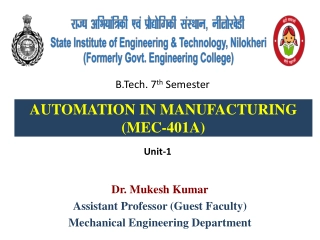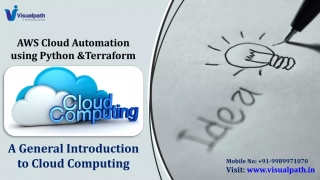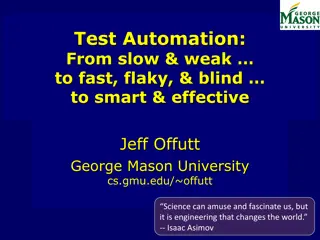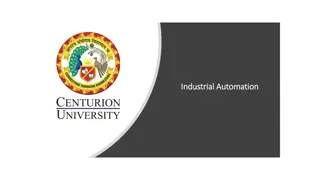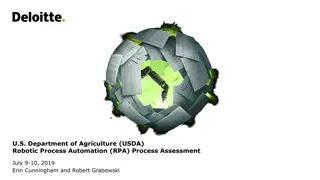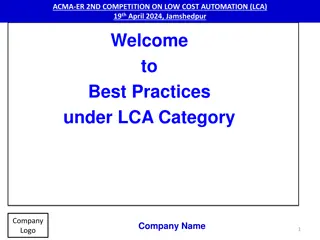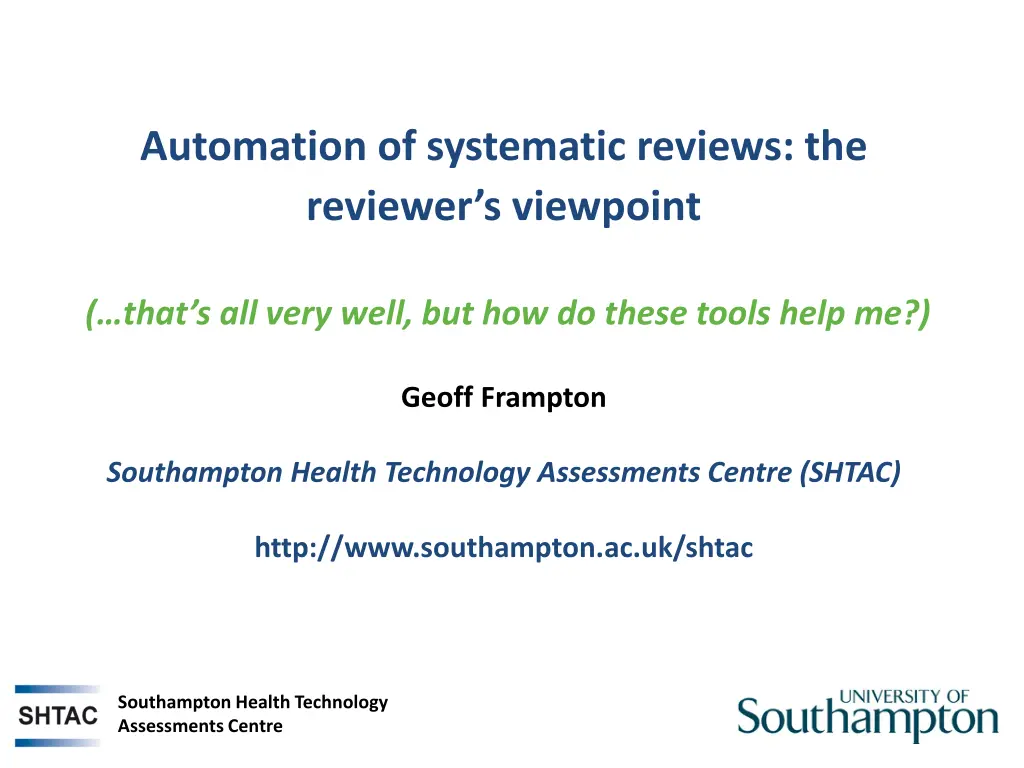
The Role of Automation in Systematic Reviews: Insights from SHTAC
Discover how automation tools are utilized in systematic reviews by Southampton Health Technology Assessments Centre (SHTAC) and the challenges they face. Explore the benefits and limitations of automation in various stages of the review process.
Download Presentation

Please find below an Image/Link to download the presentation.
The content on the website is provided AS IS for your information and personal use only. It may not be sold, licensed, or shared on other websites without obtaining consent from the author. If you encounter any issues during the download, it is possible that the publisher has removed the file from their server.
You are allowed to download the files provided on this website for personal or commercial use, subject to the condition that they are used lawfully. All files are the property of their respective owners.
The content on the website is provided AS IS for your information and personal use only. It may not be sold, licensed, or shared on other websites without obtaining consent from the author.
E N D
Presentation Transcript
Automation of systematic reviews: the reviewer s viewpoint ( that s all very well, but how do these tools help me?) Geoff Frampton Southampton Health Technology Assessments Centre (SHTAC) http://www.southampton.ac.uk/shtac Southampton Health Technology Assessments Centre
SHTAC: Who are we and what do we do? A team of systematic reviewers and health economists We conduct systematic reviews (and maps) on a wide variety of health and social sciences topics (e.g. for NIHR, Cochrane Collaboration, WHO) We also critically appraise systematic reviews and economic analyses conducted by other parties, e.g. companies submitting evidence to NICE Southampton Health Technology Assessments Centre
Do we use automation for systematic reviews (SR) ? Depends on how automation is defined Yes, in bibliographic searching running search strategies in databases or search engines importing search results into reference management software Yes, within reference management software identification of duplicate references acquiring full-text documents rule-based sorting (e.g. grouping) of references Not (yet) for other steps of systematic reviews (or maps) Southampton Health Technology Assessments Centre
Our experiences Bibliographic searching Automation saves effort in searching and retrieving references BUT Search functionality is not consistent across databases Manual translation of search strategies is necessary for some databases Reference import or download options are sometimes limited by quantity or completeness Southampton Health Technology Assessments Centre
Our experiences Reference management software Automation saves effort in organising references BUT A proportion of references is often incomplete or incorrect Duplicates are often missed Full text documents are not always available or accessible Southampton Health Technology Assessments Centre
Where else in SR could automation help us? Eligibility screening Especially if thousands of titles & abstracts require screening BUT Might compromise recall (up to 5%?) Which tool(s) should we use? Would automation replace one human reviewer? Suitable for full-text screening? Quality assurance process (reviewer agreement)? Southampton Health Technology Assessments Centre
Where else in SR could automation help us? Guide for data extraction? Help reviewers to identify where relevant data are located in a report (but risk of over-reliance?) Guide for planning/formatting? Auto-filling of relevant data fields in Protocol or Review report Prompting for human input to ensure standardisation Southampton Health Technology Assessments Centre
Discussion points Automation unlikely to be applicable to all steps of SR Some steps require human judgement SR need human inputs (e.g. stakeholder advisors to guide http://canadiem.org/wp-content/uploads/2013/01/networking-circle-with-puzzle-pieces.jpg?w=300 clinical interpretation and problem-spotting) Southampton Health Technology Assessments Centre
Discussion points Automation unlikely to be applicable to all steps of SR Some steps require human judgement SR need human inputs (e.g. stakeholder advisors to guide clinical interpretation and problem-spotting) Automation unlikely to be applicable to all types of SR For some SR (e.g. complex interventions) even human reviewers find it challenging to locate and select evidence http://cliparts.co/cliparts/pTo/54E/pTo54Eenc.jpg automation could be valuable on a case-by-case basis may guide human reviewers on some SR steps Southampton Health Technology Assessments Centre
Wish list: what would we as reviewers like to see? More efficient automation of searching and reference retrieval Improved capability to interrogate multiple databases and search engines with the same search strategy Improved quantity and completeness of references that can be imported into reference management software Improved compatibility of databases and search engines with reference management software Southampton Health Technology Assessments Centre
Wish list: what would we as reviewers like to see? More efficient reference management A tool to validate and update all references in a library to ensure completeness and accuracy (to also improve de-duplication) Guidance on tools for automated eligibility screening Which tools are available? Where to find them? How to use them? training requirements for the operator? time and resources for machine learning processes? Critical evaluation of strengths and weaknesses https://i.ytimg.com/vi/an2YAvK_Q1s/maxresdefault.jpg Southampton Health Technology Assessments Centre







